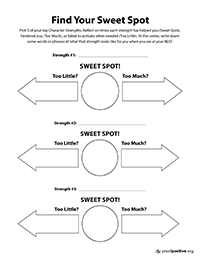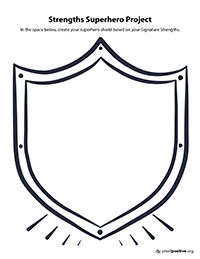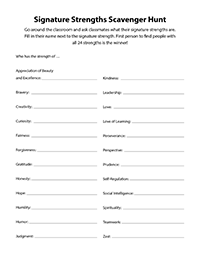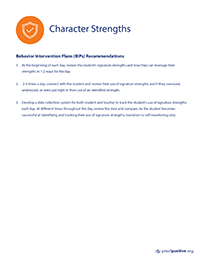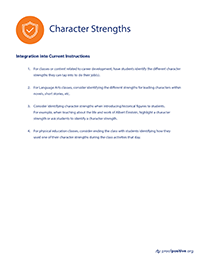TEACH Character Strengths
Explore the intersection of positive psychology and autism intervention by teaching your students how to capitalize on their character strengths!
Start Teaching!
This comprehensive bundle comes with everything you need to bring Character Strengths into the classroom, from teaching slides and notes to supplementary resources.
Quick Link Library
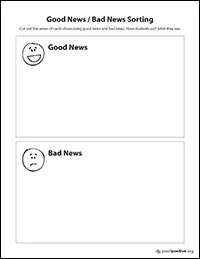
Shine a Light on YOUR Signature Strengths
![]() 10 Minutes
10 Minutes
![]() 10 Minutes
10 Minutes
![]() 20 Minutes
20 Minutes
![]() 10 Minutes
10 Minutes
Signature Strengths Scavenger Hunt
![]() 30 Minutes
30 Minutes
Strengths and Interests Reflection
![]() 25 Minutes
25 Minutes
Behavioral Intervention Plan Recommendations
![]() 15 Minutes
15 Minutes
![]() 15 Minutes
15 Minutes
Integration into Curriculum Instructions
![]() 15 Minutes
15 Minutes
Expanded Teaching Resources
Lesson Plans & Teaching Materials
Objectives (PDF)
Teaching Slides — All Activities (Google Slides)
Teacher’s Guide (Google Slides, PDF)
Teacher Answer Key (PDF)
Unit Study Bundle Pack — All Activities (PDF)
Behavior Intervention Plans (BIPs) are more than just behavior supports – they’re pathways to learning and success. By prioritizing wellbeing and happiness in BIPs, you can help create structure and consistency while also making space for joy, connection and resilience. With the right supports in place, students can feel empowered, successful and experience more happiness at school.
- At the beginning of each day, review the student’s signature strengths and how they can leverage their strengths in 1-2 ways for the day.
- 2-3 times a day, connect with the student and review their use of signature strengths and if they overused, underused, or were just right in their use of an identified strength.
- Develop a data collection system for both student and teacher to track the student’s use of signature strengths each day. At different times throughout the day, review the data and compare. As the student becomes successful at identifying and tracking their use of signature strengths, transition to self-monitoring only.
Individualized Education Plans (IEPs) ensure every student has access to the supports they need to thrive. When happiness and wellbeing is included and prioritized in IEPs, students are more likely to flourish in learning and in life. By shifting from a deficit-based approach to one of strengths and potential, IEPs can open doors to learning, connection and joy – at school and beyond.
- [Student Name] will complete the VIA Character Strengths Assessment and share their top 5 signature strengths with caregivers and classroom teachers.
- For a student who is unable to access the VIA Survey with modifications, host a family/team meeting (in-person or virtually) to discuss the student from a strengths perspective. Provide each attendee with a list of the 24 strengths and have them circle 5 – 7 strengths they have seen the student display.
- [Student Name] will receptively identify each of the 24 character strengths using character strength flashcards.
- [Student Name] will expressively identify each of the 24 character strengths using character strength flashcards.
- [Student Name] will identify 1-2 activities for each of their signature strengths across their home, community and school settings.
- [Student Name] will ask, and respond to, questions related to signature strengths as part of a reciprocal question-asking program.
Bringing wellbeing to the forefront doesn’t require a complete overhaul of your classroom routine. By integrating happiness skills into what you’re already teaching, you can help students learn and practice happiness in simple, meaningful ways. From morning meetings and check-ins to reading, writing, and relationship-building, there are countless ways to make wellbeing part of everyday learning.
- For classes or content related to career development, have students identify the different character strengths they can tap into to do their job(s).
- For Language Arts classes, consider identifying the different strengths for leading characters within novels, short stories, etc.
- Consider identifying character strengths when introducing historical figures to students. For example, when teaching about the life and work of Albert Einstein, highlight a character strength or ask students to identify a character strength.
- For physical education classes, consider ending the class with students identifying how they used one of their character strengths during the class activities that day.
Classroom Activities
Each activity includes teacher notes and differentiated instruction across skill levels
- Activity 1: Introduction to Character Strengths
100-120 Minutes / Google Slides + Teacher Notes - Activity 2: Character Strengths Deep Dive
30-45 Minutes / Google Slides + Teacher Notes / Student Worksheets (PDF) - Activity 3: Strengths in Action
30-45 Minutes / Google Slides + Teacher Notes / Student Worksheets (PDF) - Activity 4: Strengths Superhero Project
20-30 Minutes / Google Slides + Teacher Notes / Student Worksheets (PDF) - Activity 5: Strengths Scavenger Hunt
20-30 Minutes / Google Slides + Teacher Notes / Student Worksheets (PDF) - Activity 6: Strengths and Interests Reflection
20-30 Minutes / Google Slides + Teacher Notes / Student Worksheets (PDF) - Unit Study Bundle Pack — All Activities (PDF)



